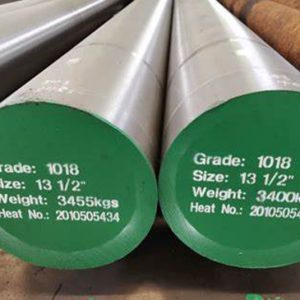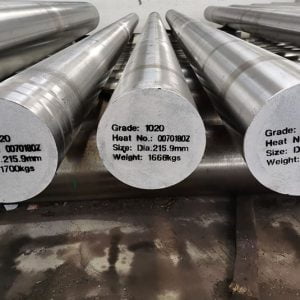Introduction
Steel is a versatile material widely used in various industries due to its strength, durability, and adaptability. One crucial property of steel that significantly impacts its performance in specific applications is thermal conductivity. High thermal conductivity steel is especially valuable in industries where heat transfer efficiency is paramount. This blog explores the benefits and applications of thermal conductivity steel, providing insights into why it is essential and how it can be utilized effectively.
Understanding Thermal Conductivity in Steel

What is Thermal Conductivity?
Thermal conductivity is the measure of a material’s ability to conduct heat. It is a critical property in applications where heat dissipation, thermal management, and efficient energy transfer are required. Materials with high thermal conductivity can rapidly transfer heat, preventing overheating and improving overall efficiency.
Thermal Conductivity in Steel
Steel, an alloy primarily composed of iron and carbon, can be engineered to exhibit varying levels of thermal conductivity. By adjusting its composition and treatment processes, manufacturers can produce steel with enhanced thermal properties. High thermal conductivity steel is particularly useful in applications where efficient heat transfer is essential, such as in heat exchangers, automotive parts, and electronic components.
Benefits of High Thermal Conductivity Steel
Improved Heat Dissipation
One of the primary benefits of high thermal conductivity steel is its ability to dissipate heat quickly. This property is crucial in preventing overheating in components and systems, thereby extending their lifespan and improving reliability.
Enhanced Energy Efficiency
Materials with high thermal conductivity enable more efficient energy transfer. In applications like heat exchangers and cooling systems, this efficiency translates into lower energy consumption and reduced operational costs.
Increased Performance and Reliability
High thermal conductivity steel enhances the performance and reliability of various components. For instance, in the automotive industry, parts made from this steel can better manage the heat generated by engines, leading to improved vehicle performance and longevity.
Versatility in Applications
The versatility of high thermal conductivity steel makes it suitable for a wide range of applications. It can be used in sectors ranging from electronics and automotive to construction and aerospace, making it a valuable material for modern engineering challenges.
Applications of High Thermal Conductivity Steel
Automotive Industry
In the automotive industry, high thermal conductivity steel is used in engine components, exhaust systems, and heat shields. Its ability to handle high temperatures and dissipate heat effectively makes it ideal for improving vehicle performance and safety.
Electronics and Electrical Engineering
High thermal conductivity steel is essential in electronics and electrical engineering for components like heat sinks, circuit boards, and thermal interface materials. It helps manage heat generated by electronic devices, ensuring their efficient operation and preventing damage from overheating.
Heat Exchangers
Heat exchangers rely on materials with high thermal conductivity to transfer heat efficiently between fluids. High thermal conductivity steel is used in the construction of heat exchangers, enhancing their efficiency and effectiveness in various industrial processes.
Aerospace and Defense
In the aerospace and defense sectors, high thermal conductivity steel is used in components that must withstand extreme temperatures and thermal cycles. Its excellent heat management properties ensure the reliability and performance of critical systems in aircraft and defense equipment.
Construction and Infrastructure
In construction, high thermal conductivity steel is used in building materials and infrastructure that require efficient heat management. It can be found in roofing materials, structural components, and systems designed to regulate temperature in buildings.
Comparison Table of High Thermal Conductivity Steels

Here is a comparison table highlighting some of the high thermal conductivity steel grades and their properties:
| Steel Grade | Thermal Conductivity (W/m·K) | Applications | Key Features |
|---|---|---|---|
| AISI 304 | 16.2 | Heat exchangers, kitchen equipment | Corrosion resistance, ease of fabrication |
| AISI 316 | 13.4 | Marine applications, chemical processing | Superior corrosion resistance |
| AISI 409 | 24.9 | Automotive exhaust systems | Good oxidation resistance |
| AISI 430 | 25.5 | Appliances, architectural trim | High formability, aesthetic appearance |
| AISI 441 | 26.0 | Industrial heat exchangers, automotive parts | High temperature resistance |
| AISI 444 | 26.2 | Hot water tanks, solar energy systems | Excellent corrosion resistance |
Conclusion
High Thermally conductive steel is a critical material in modern engineering, offering significant benefits in heat dissipation, energy efficiency, and performance. Its versatile applications across various industries highlight its importance in advancing technology and improving operational efficiencies. By understanding the properties and advantages of thermal conductivity steel, industries can make informed decisions to enhance their products and processes.
FAQ
What is the main advantage of high Thermally conductive steel?
The main advantage of high Thermally conductive steel is its ability to efficiently dissipate heat, which prevents overheating, enhances energy efficiency, and improves the performance and reliability of components and systems.
How does high Thermally conductive steel improve energy efficiency?
High Thermally conductive steel improves energy efficiency by enabling faster and more efficient heat transfer. This reduces the energy required for cooling and heating processes, leading to lower operational costs and enhanced system performance.
In which industries is high thermal conductivity steel most commonly used?
High thermal conductivity steel is commonly used in the automotive, electronics, aerospace, construction, and heat exchanger industries. Its ability to manage heat effectively makes it valuable in applications where thermal management is crucial.
Can high thermal conductivity steel be used in high-temperature applications?
Yes, high thermal conductivity steel can be used in high-temperature applications. Its excellent heat dissipation properties and thermal stability make it suitable for environments where components are exposed to extreme temperatures.
How does high thermal conductivity steel contribute to the reliability of electronic devices?
High thermal conductivity steel contributes to the reliability of electronic devices by efficiently managing the heat generated during operation. This prevents overheating, reduces thermal stress on components, and extends the lifespan of electronic devices.
What factors should be considered when selecting high thermal conductivity steel for a specific application?
When selecting high thermal conductivity steel for a specific application, consider factors such as the required thermal conductivity, mechanical properties, corrosion resistance, and compatibility with other materials. Additionally, evaluate the specific thermal management needs of the application to ensure optimal performance.
Are there any limitations to using high thermal conductivity steel?
While high thermal conductivity steel offers numerous benefits, it may have limitations such as cost, availability, and specific property requirements for certain applications. It is essential to evaluate these factors and select the appropriate steel grade that meets the needs of the application.
How does the thermal conductivity of steel compare to other metals?
The thermal conductivity of steel is generally lower than metals like copper and aluminum but higher than many other materials. However, specific steel grades with high thermal conductivity can provide effective heat management for various applications.









